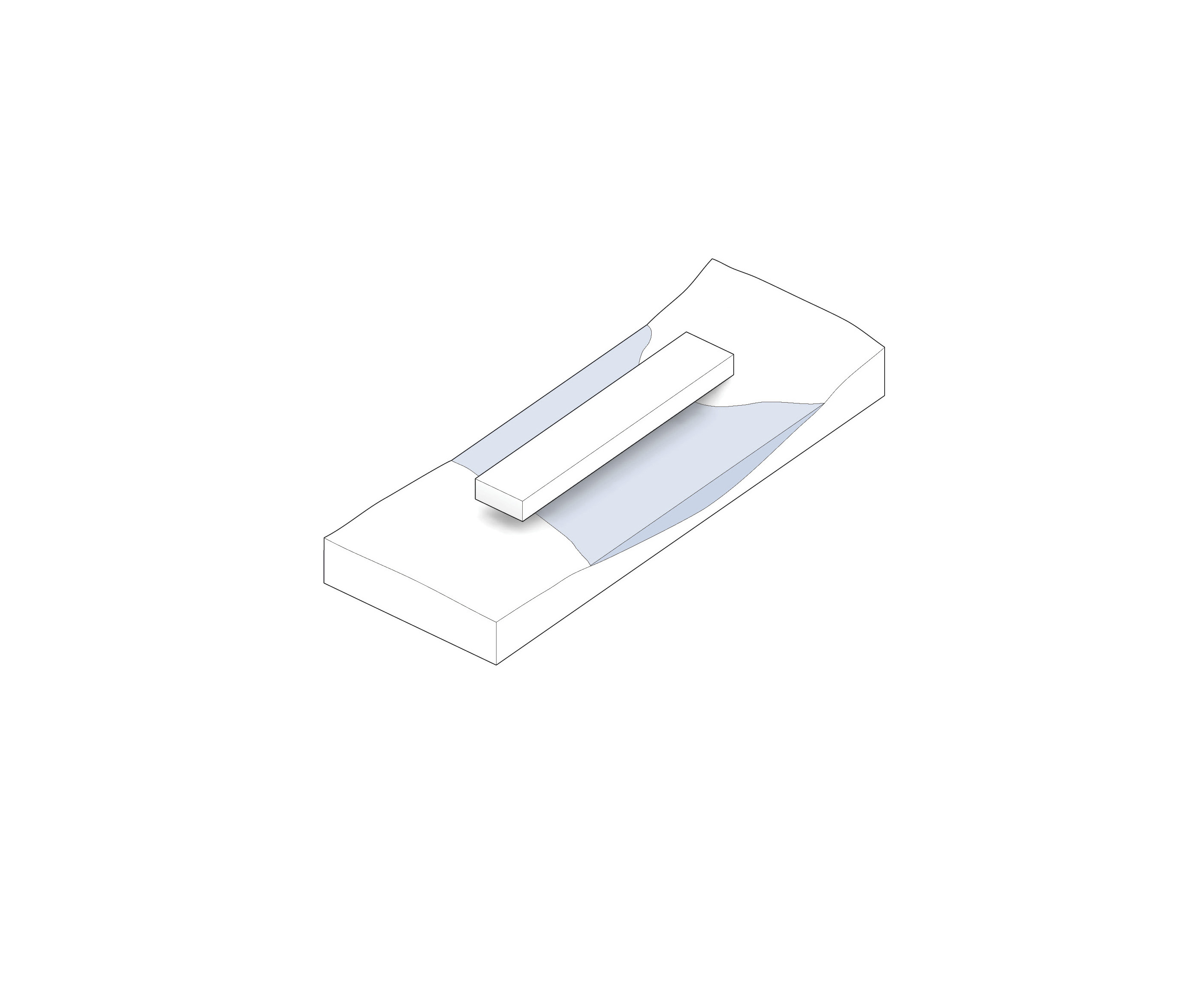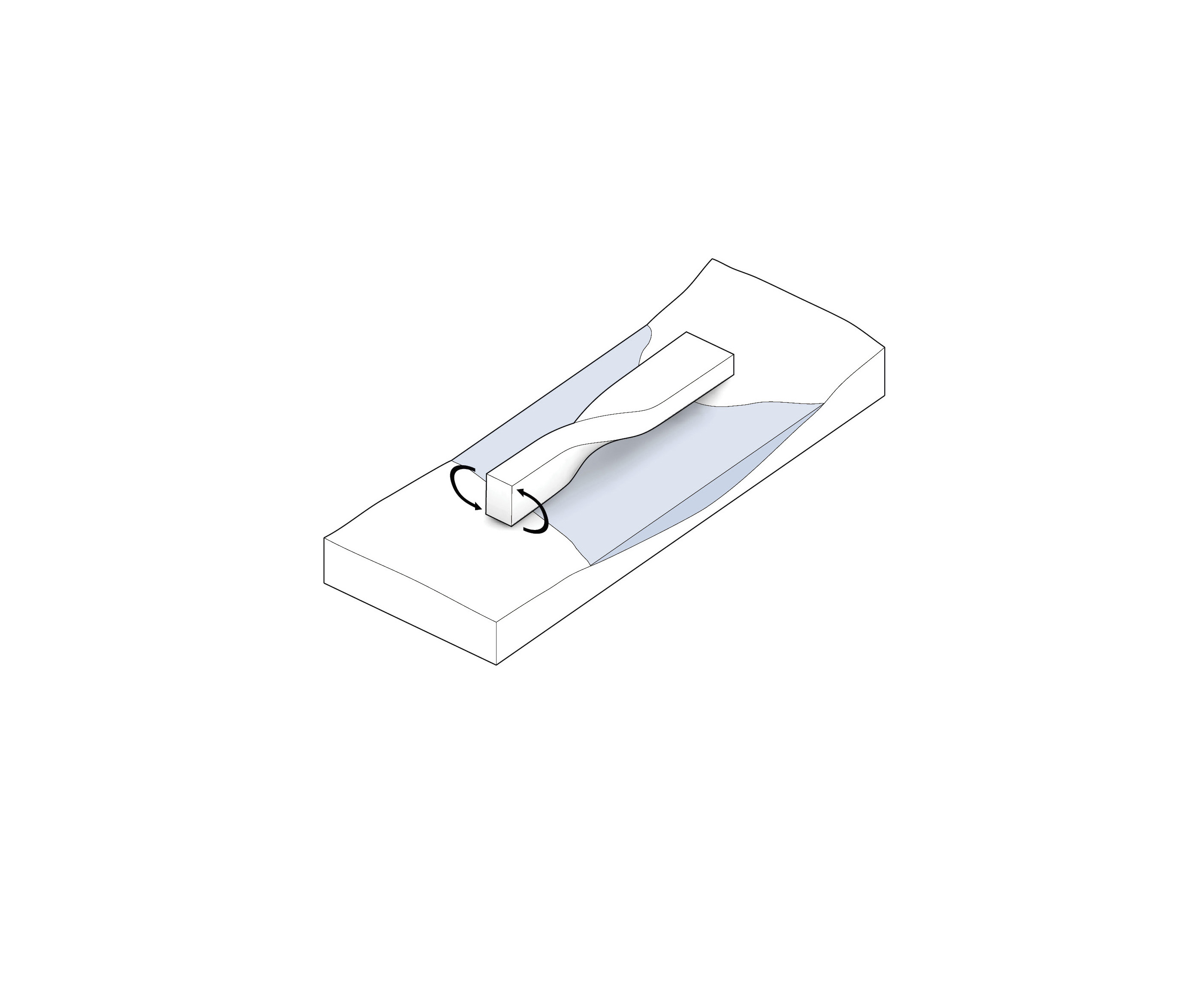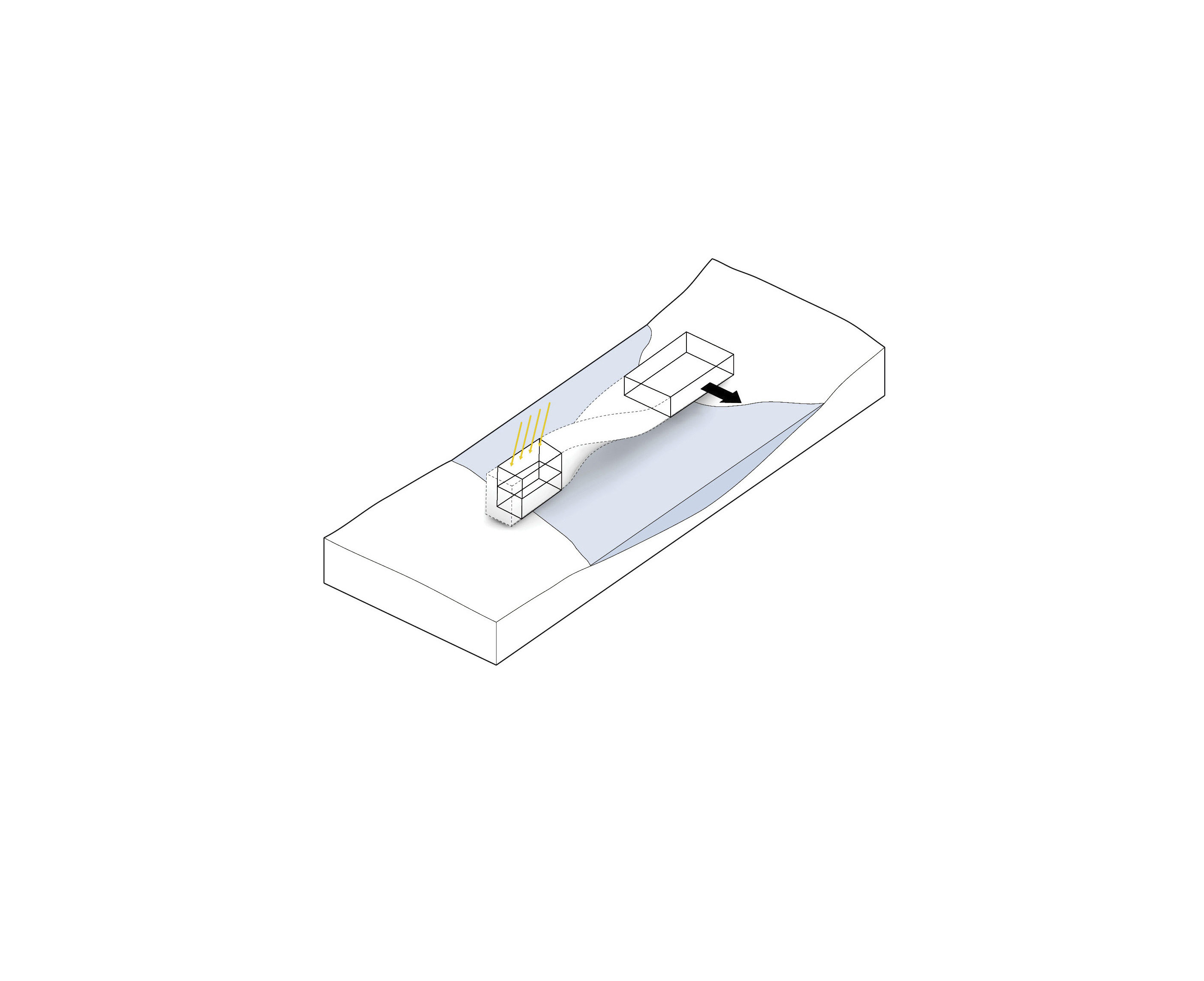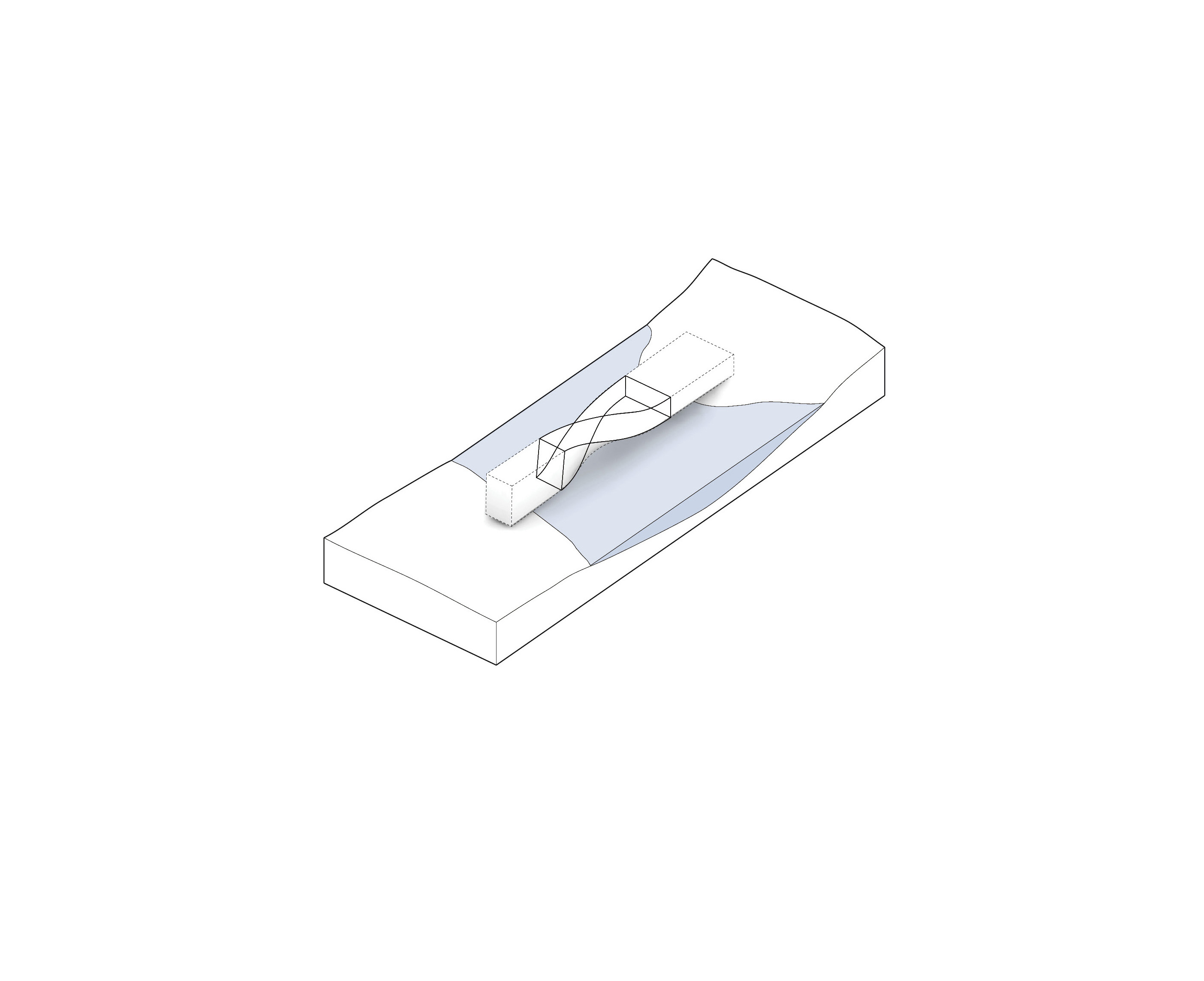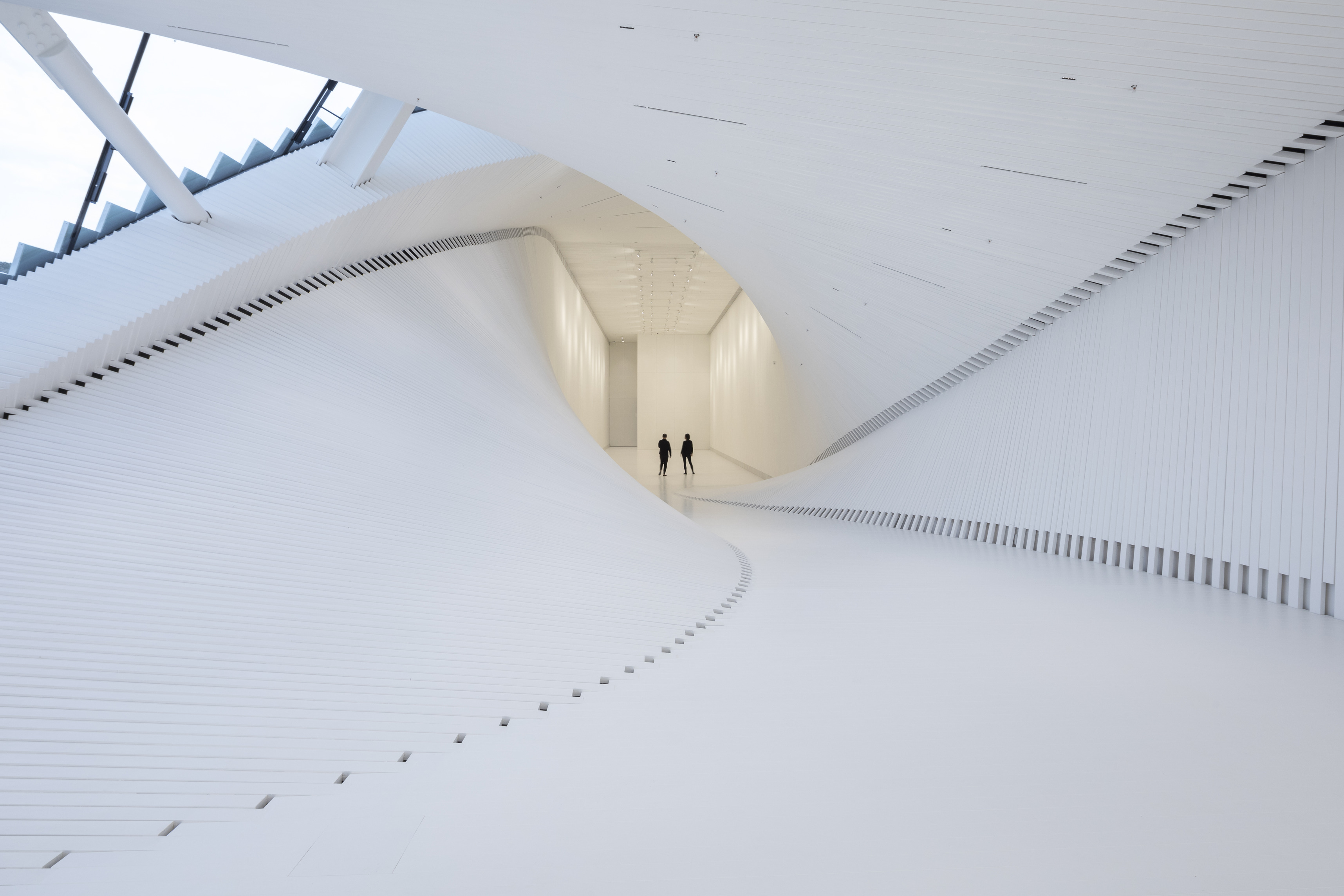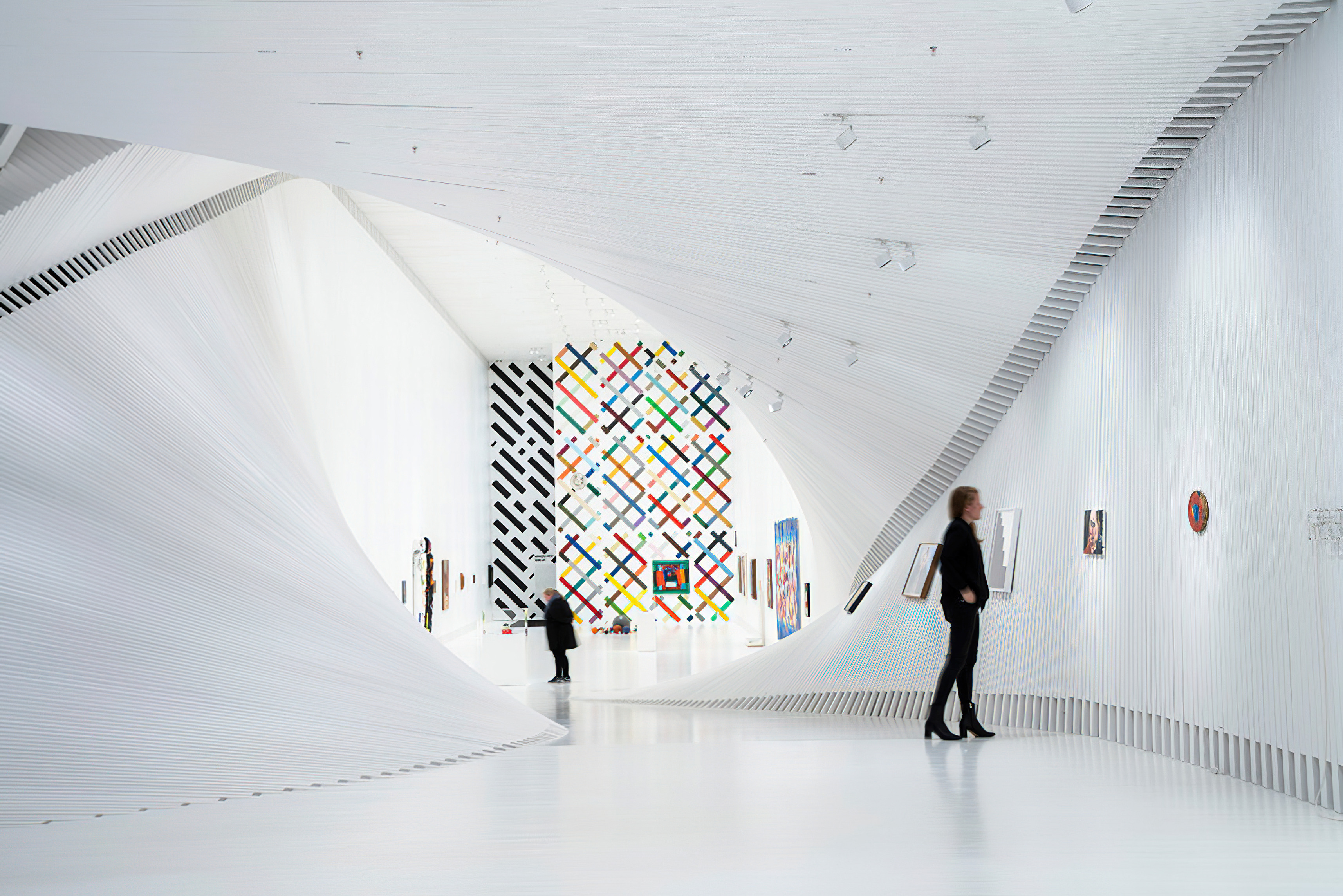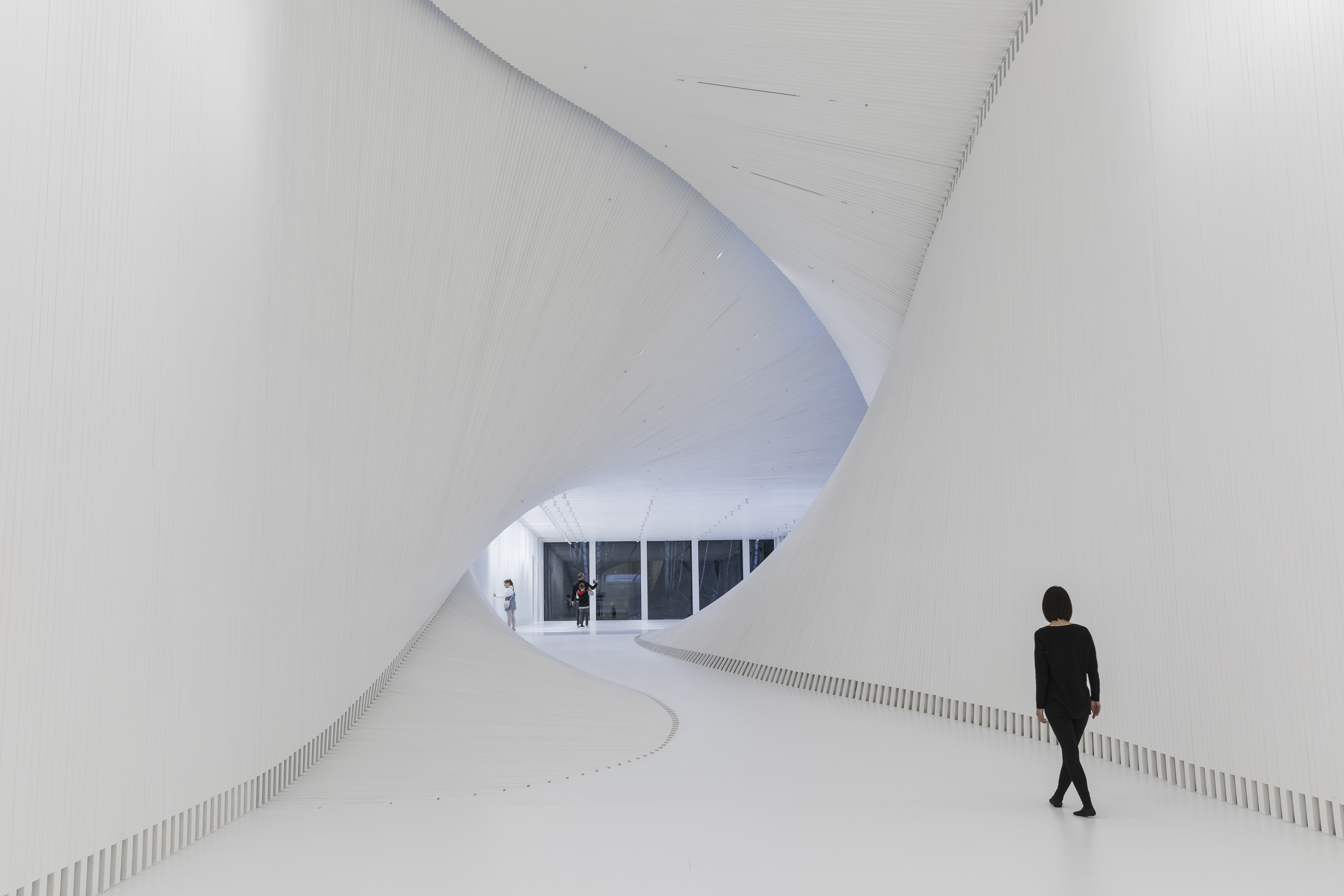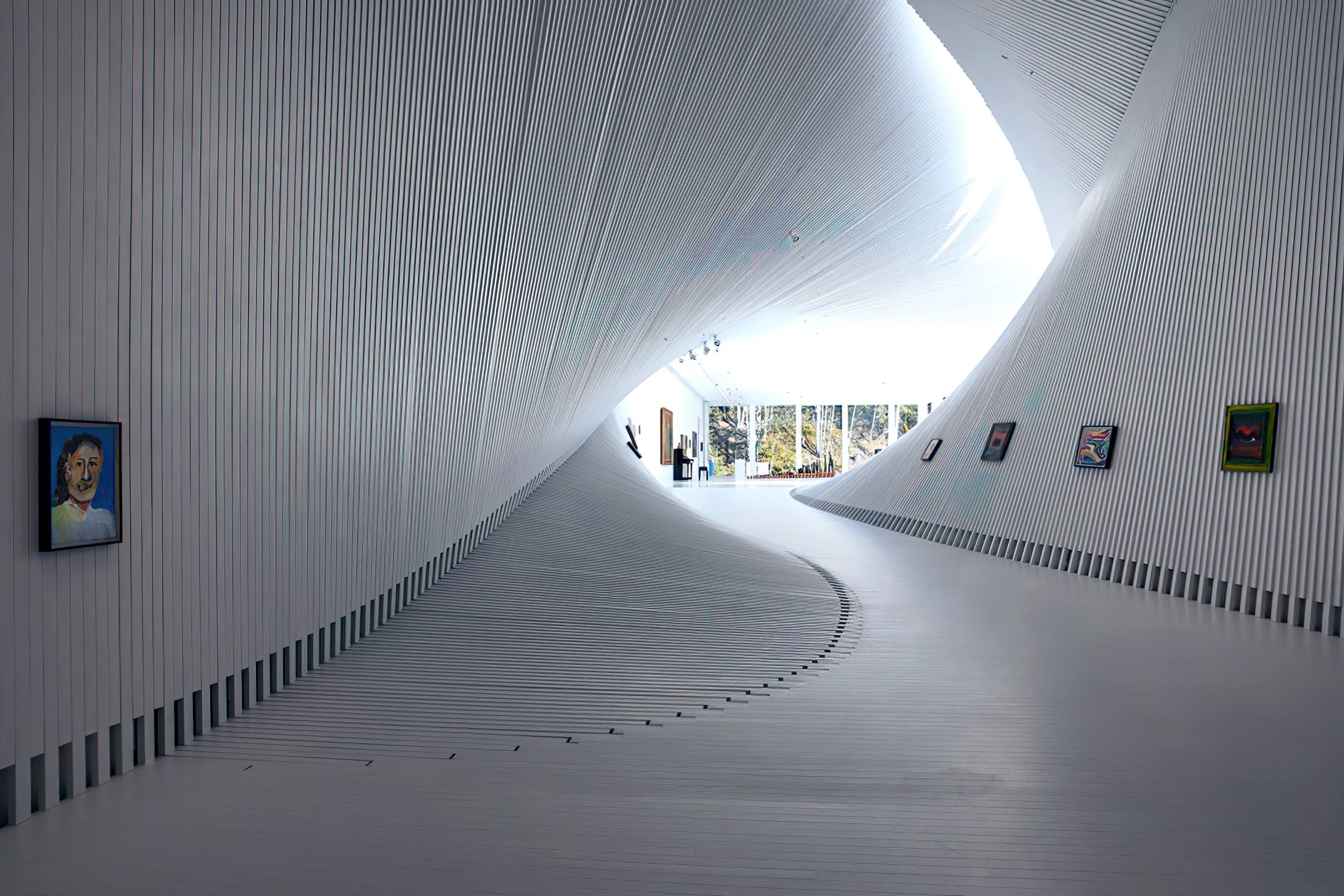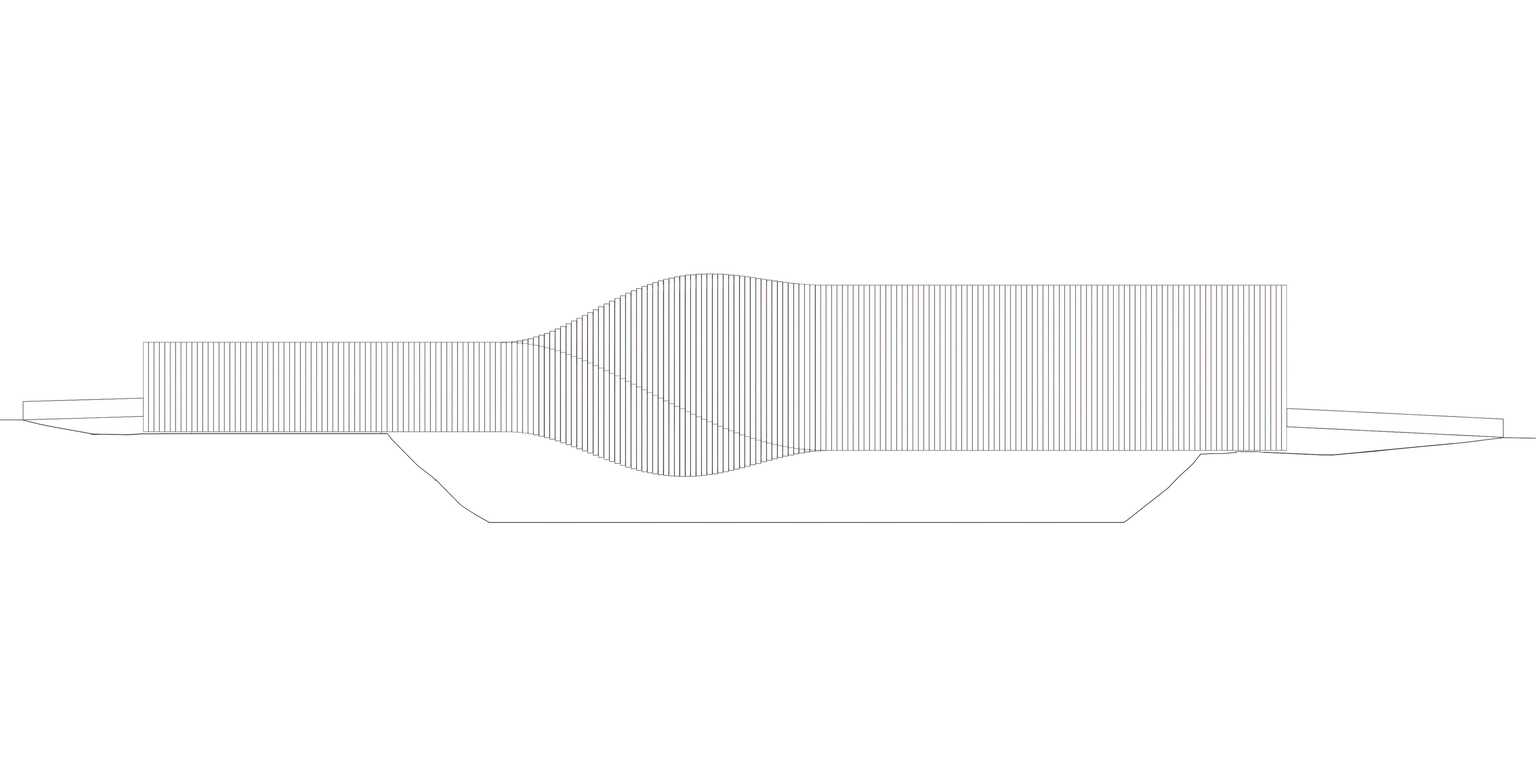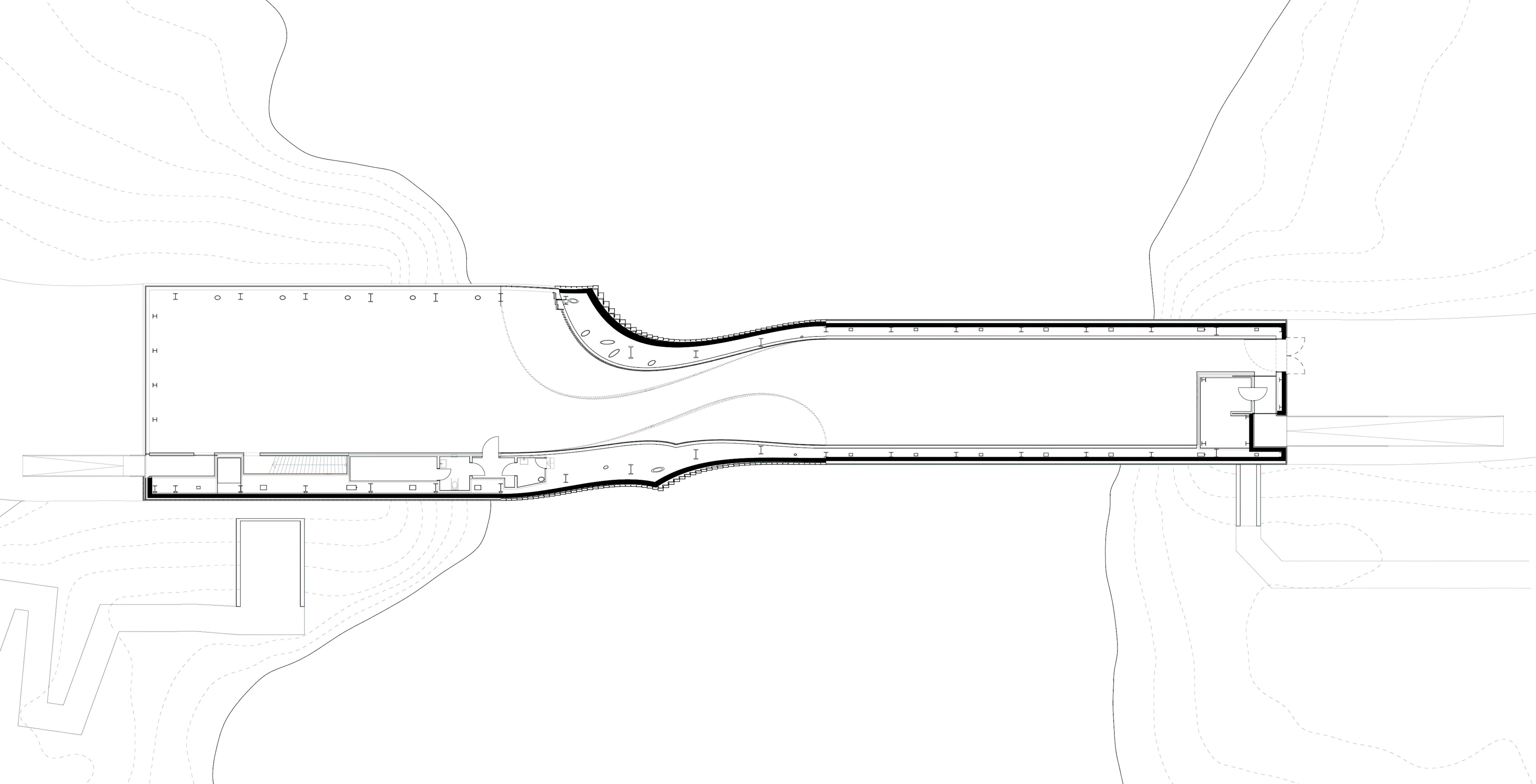STATUS
COMPLETED
JEVNAKER, NORWAY
CLIENT
Kistefos Museum Jevnaker
TYPOLOGY
Culture
SIZE M2/FT2
1,000 / 10,764
STATUS
COMPLETED
SHARE
The Twist is a contemporary art museum situated in the Kistefos Sculpture Park, located around a one hour drive from Oslo. The sculpture park, built around an old paper mill, occupies both embankments of the Randselva river and features sculptures by Olafur Eliasson, Lynda Benglis, Yayoi Kusama, Jeppe Hein, and Anish Kapoor, among others.
BIG was invited to design an intimate art museum to transform the visitor experience and add 1,000 m2 of indoor exhibition space to the park. After a careful study of the site, BIG proposed a raw and simple sculptural building across the Randselva river to tie the area together and create a natural circulation for a continuous art tour through the park.
Completed in 2019, The Twist is conceived as a beam, warped 90 degrees to create a sculptural form within the park and connect the two riverbanks: a museum, bridge and sculpture in one.
"The Twist is a hybrid spanning several traditional categories: it’s a museum, it’s a bridge, it’s an inhabitable sculpture. As a bridge, it reconfigures the sculpture park turning the journey through the park into a continuous loop. As a museum it connects two distinct spaces - an introverted vertical gallery and an extraverted horizontal gallery with panoramic views across the river. A third space is created through the blatant translation between these two galleries creating the namesake twist. The resultant form becomes another sculpture among the sculptures of the park."
The museum is placed as an abstract shape in the landscape. Its sculptural form is spanning between perfect geometry and specific bridge technology: on one side, it’s a simple box structure; on the other side, it’s a huge warping sculpture. A simple twist in the building volume allows the bridge to lift from the relatively lower forested area towards the south, and up to the hillside area in the north.
As a continuous path in the landscape, both sides of the building serve as the main entrance. From the south entry, visitors cross a 16 m aluminum-clad steel bridge to reach the double-height space, with a clear view to the north end, similarly linked with a 9 m pedestrian bridge.
The double-curve geometry of the museum is comprised of straight 40 cm-wide aluminum panels arranged like a stack of books, shifted ever so slightly in a fanning motion. The same principle is used inside, with white painted 8 cm-wide fir slats cladding the floor, wall, and ceiling as one uniform backdrop for Kistefos’ short-term Norwegian and international exhibitions.
The museum is comprised of a series of generic gallery spaces where, due to the curved form of the glass windows, the variety of daylight entering the museum creates three distinctive galleries. Stacked vertical, dark galleries with artificial lighting are found to the south, and a large horizontal, naturally-lit gallery with panoramic views is located on the north side. In between these spaces is the sculptural gesture, creating a twisted sliver of roof light.
From either direction, visitors experience the twisted gallery as though walking through a camera shutter. The ability to compartmentalize, divide, or merge the gallery spaces creates flexibility for Kistefos’ artistic programming.
The main entrance to the building is from the south, with the information center and visitor facilities such as a cloak and locker room, museum shop, and restrooms located nearby. From this entrance, there is a clear view to the other end of the building, including the sloping gallery which is located along the main circulation ramp – guiding visitors to the panoramic gallery.
The panoramic gallery is a large open space suitable for sculptures and large installations, with the ability to be subdivided for special occasions and events. On the north end, a full-height glass wall offering panoramic views to the pulp mill and river tapers while curving upwards to form a 25 cm-wide strip of skylight. A café is situated at this end of the gallery, where guests can enjoy snacks while taking in the view of the historic pulp mill and surrounding landscape. During the summer months, the café service area spills onto the plateau just outside.
A glass stairway leads down to the museum’s lower level on the north river embankment, where the building’s aluminum underside becomes the ceiling for the basement and restroom area. Another full-width glass wall brings visitors even closer to the river below, enhancing the overall immersive experience of being in the idyllic woodlands just outside of Oslo.
The art delivery and reception area is shared with the main entrance. Art can be delivered discreetly and securely after hours, and the art shipping crates are stored in the exhibition storage room once the art has been installed in its respective gallery.
Bjarke Ingels Finn Nørkjær David Zahle Jakob Lange Brian Yang Catherine Huang Casey Tucker Aimee Louise Desert Alberto Menegazzo Aleksandra Domian Alessandro Zanini Andre Enrico Cassettari Zanolla Brage Hult Carlos Ramos Tenorio Channam Lei Christian Eugenius Kuczynski Claus Rytter Bruun de Neergaard Dag Præstegaard Edda Steingrimsdottir Espen Vik Eva Seo-Andersen Frederik Lyng Joanna M. Lesna Kamilla Heskje Katrine Juul Kekoa Charlot Kei Atsumi Kristoffer Negendahl Lasse Lyhne-Hansen Lone Fenger Albrechtsen Mads Mathias Pedersen Mael Joseph Jaques Barbe Martino Hutz Matteo Dragone Maxime Le Droupeet Mikkel Marcker Stubgaard Naysan John Foroudi Nick Adriaan Huizenga Norbert Nadudvari Ovidiu Munteanu Rasmus Rosenblad Rihards Dzelme Roberto Fabbri Ryohei Koike Sofiia Rokhmaniko Steen Kortbæk Svendsen Sunwoong Choi Tomas Karl Minör Tommy Bjørnstrup Tore Banke Tyrone Cobcroft Ulla Hornsyld Xin Chen Carlos Suriñach Penella Alina Tamosiunaite Balaj Alin Iulian Christian Dahl David Tao Marcelina Kolasinska Richard Mui Tiina Liisa Juuti Ola Sobczyk
LCD Berlin Leading Culture Destinations of the Year Award, 2020
Building Awards International Project of the Year, 2020
Architizer A+ Awards Architecture + Engineering Jury Winner, 2020
Architizer A+ Awards Gallery & Exhibitions Jury and Popular Winner, 2020
AKT II
ÅF-Belysning
AS Byggeanalyse
Baumetall/Zambelli Group
Bladt Industries
Brekke & Strand
David Langdon
DIFK
ECT
Element Arkitekter
Erichsen & Horgen
Fokus Rådgivning
GCAM
Grindaker
Lüchinger&Meyer
Max Fordham
MIR
Rambøll
BIG Ideas
